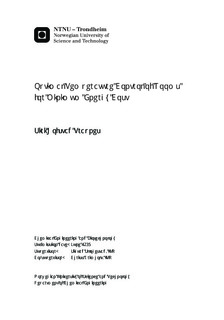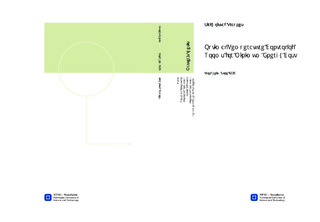| dc.description.abstract | In this thesis was a room with direct heating in the floor and room modelled. The aim has been to minimize the energy cost of the room, assuming that the future energy price and weather forecast is known. The constrained optimization problem turned out to be linear, and the solution of the problem will always be on the upper or lower bounds of the inputs or states. The idea is to store heat when the energy price is low, and use it when the energy price is high. A switching time that ensures that the model starts the heating of the system at an optimal time in order to save energy costs is thus of importance to find.The problem was solved by using the matlab function fminsearch, and by assuming constant outdoor temperature. Two scenarios were analysed; 1) where only the floor heat is used to storage of heat, and 2) where both heaters are used to heat the system. In each scenario the length and starting point of the interval where the energy price is high was varied. This thesis show that storage of heat in the floor is preferred, apart from in the case where there is no time to heat before the peak interval begins, where both heaters in the floor and room should be used. For comparison, the optimization problem was also solved by using PI controllers, where the two inputs control the temperature in the floor and room respectively. It turned out that the result of the control problem when using PI will resemble the solution of the optimal control problem when using fminsearch.A couple of switching rules was derived in order to find the optimal switching time. This thesis show that the switching rules gives a good estimate of the switching time, apart from in the case where there is no time to heat. The switching rules was used in both methods (when using PI and fminsearch) and it was found that the obtained switching time is not far from the optimal solution in any of the methods. The optimization problem when using fminsearch was tested with varying outdoor temperature. It was seen that the solution from the optimal control problem will take the disturbance into consideration if it is varied before the peak period. On the other hand, the model do not allow for a variation in the outdoor temperature after the peak period.At last, the thesis show that the switching rule handle a variation in the disturbance before the peak period as good as the optimal control problem, but when the outdoor temperature becomes too cold will the result be poor. | nb_NO |

